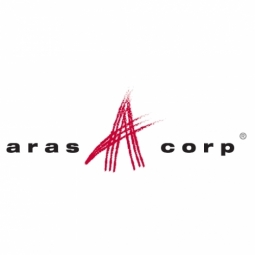技术
- 功能应用 - 制造执行系统 (MES)
- 平台即服务 (PaaS) - 应用开发平台
适用行业
- 生命科学
- 药品
适用功能
- 产品研发
- 质量保证
用例
- 添加剂制造
- 制造过程模拟
服务
- 系统集成
- 培训
客户
内河航运
关于客户
IWT专门为全球生命科学和制药行业设计、制造和安装清洗系统。制造基地位于意大利瓦雷泽,工厂拥有 129,000 平方英尺的生产区、设计工作室、培训和陈列室设施。
挑战
内河航运的产品线有了很大的增长。目前,该公司生产 45 种不同的型号,其中 60% 都经过了一定程度的定制。
管理如此广泛的产品组合、有限的生产数量和高水平的定制,意味着开发一个用于管理工程变更发布的受控流程对于提高效率、减少流程时间和更好地协调整个组织的生产是必不可少的.
随着高度的定制化,加上受到严格监管的行业对严格合规的要求,对现代 PLM 平台的需求变得清晰起来。
解决方案
Aras Innovator 平台允许 IWT 开发涵盖整个流程的工程变更单 (ECO) 工作流程。
工程 BOM 组织已与制造需求分离,工业工程师在发布生产变更时协助操作结构和验证数据一致性。整个流程在单一工作流程中进行管理,允许对影响关键项目交付的变更进行优先级管理。
IWT 能够在减少返工活动和改进优先级管理方面看到立竿见影的效果。使用相同的方法,IWT 现在正在逐步扩展 Aras Innovator 平台的使用,以创建一个集成的基础架构来管理整个组织的产品。
运营影响
数量效益

Case Study missing?
Start adding your own!
Register with your work email and create a new case study profile for your business.
相关案例.

Case Study
Case Study: Pfizer
Pfizer’s high-performance computing software and systems for worldwide research and development support large-scale data analysis, research projects, clinical analytics, and modeling. Pfizer’s computing services are used across the spectrum of research and development efforts, from the deep biological understanding of disease to the design of safe, efficacious therapeutic agents.

Case Study
Fusion Middleware Integration on Cloud for Pharma Major
Customer wanted a real-time, seamless, cloud based integration between the existing on premise and cloud based application using SOA technology on Oracle Fusion Middleware Platform, a Contingent Worker Solution to collect, track, manage and report information for on-boarding, maintenance and off-boarding of contingent workers using a streamlined and Integrated business process, and streamlining of integration to the back-end systems and multiple SaaS applications.

Case Study
Process Control System Support
In many automated production facilities, changes are made to SIMATIC PCS 7 projects on a daily basis, with individual processes often optimised by multiple workers due to shift changes. Documentation is key here, as this keeps workers informed about why a change was made. Furthermore, SIMATIC PCS 7 installations are generally used in locations where documentation is required for audits and certification. The ability to track changes between two software projects is not only an invaluable aid during shift changes, but also when searching for errors or optimising a PCS 7 installation. Every change made to the system is labour-intensive and time-consuming. Moreover, there is also the risk that errors may occur. If a change is saved in the project, then the old version is lost unless a backup copy was created in advance. If no backup was created, it will no longer be possible to return to the previous state if and when programming errors occur. Each backup denotes a version used by the SIMATIC PCS 7 system to operate an installation. To correctly interpret a version, information is required on WHO changed WHAT, WHERE, WHEN and WHY: - Who created the version/who is responsible for the version? - Who released the version? - What was changed in the version i.e. in which block or module of the SIMATIC PCS 7 installation were the changes made? - When was the version created? Is this the latest version or is there a more recent version? - Why were the changes made to the version? If they are part of a regular maintenance cycle, then is the aim to fix an error or to improve production processes? - Is this particular version also the version currently being used in production? The fact that SIMATIC PCS 7 projects use extremely large quantities of data complicates the situation even further, and it can take a long time to load and save information as a result. Without a sustainable strategy for operating a SIMATIC PCS 7 installation, searching for the right software version can become extremely time-consuming and the installation may run inefficiently as a result.

Case Study
ELI LILLY ADOPTS MICROMEDIA’S ALERT NOTIFICATION SYSTEM
Pharmaceutical production is subject to a strict set of enforced rules that must be adhered to and compliance to these standards is critically necessary. Due to the efforts of WIN 911’s strategic partner Micromedia, Lilly was able to adopt an alarm notification infrastructure that integrated smoothly with their existing workflows and emergency hardware and protocols. These raw energy sources enable the industrial process to function: electricity, WIN-911 Software | 4020 South Industrial Drive, Suite 120 | Austin, TX 78744 USA industrial steam, iced water, air mixtures of varying quality. Refrigeration towers, boilers and wastewater are monitored by ALERT. Eli Lilly identified 15000 potential variables, but limitations compelled them to chisel the variable list down to 300. This allowed all major alarms to be covered including pressure, discharge, quantity of waste water discharged,temperature, carbon dioxide content, oxygen & sulphur content, and the water’s pH.









